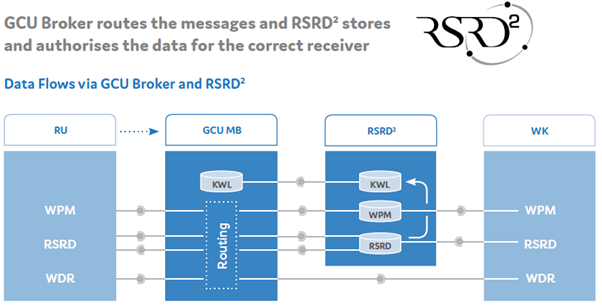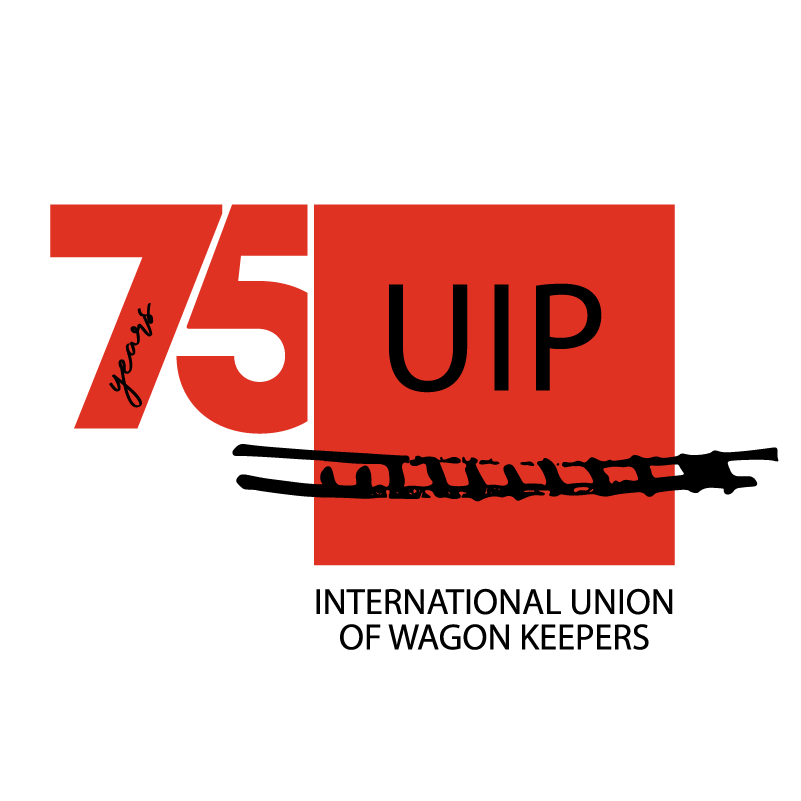Digital Railways
Digitalisation: don't miss the opportunity
The European Commission’s Digital Agenda is one of the seven pillars of the Europe 2020 Strategy presented by Commission President Juncker. It applies to all modes of transport and aims at developing a digital single market in order to generate smart, sustainable and inclusive growth in Europe. In this context, the Digitalisation of railways is a key factor to improve information exchange and develop better services to passengers and freight.
In order to increase the competitiveness and the reliability of services in rail freight, we need to explore all the opportunities offered by digital technology and commit to innovation. If we want to speed-up the processes towards a higher degree of interoperability while maintaining safety along the rail network, we need a joint effort of all involved actors including suppliers, shippers and end-users.
The EU Digital Single Market strategy (COM (2015) 192) which was adopted on 6th of May 2015 includes 16 initiatives to be delivered by the end of 2016. These initiatives are grouped in three main pillars:
- Access: better access for consumers and businesses to digital goods and services across Europe;
- Environment: creating the right conditions and a level playing field for digital networks and innovative services to flourish;
- Economy & Society: maximising the growth potential of the digital economy.
In this context and to launch an open dialogue among all modes of transport and Member States, the EC set up the Digital Transport and Logistic Forum (DTLF) on 9th April 2015, to which UIP was appointed as an observer. The Forum brings together experts from the industry and the rail sector who share current best practices and forthcoming digital priorities and needs. This work includes the support for the implementation of the Commission’s initiative on Electronic Freight Transport Information – eFTI and the development and deployment of a concept of the corridor freight information systems, aimed to facilitate data sharing between all types of stakeholders in transport and logistics sector. DG MOVE is about to define the technical specifications within the so‐called Sub‐Group 1 with the first kick-off meeting being planned in mid-September 2019.
Significance to UIP and our Members
UIP and its members strongly believe that a commitment is needed for voluntary cooperation among Wagon Keepers, RUs and Infrastructure Managers to exchange information that is important for the proper maintenance and safe operations of rail vehicles between those partners who “need to know”. The internet of things (IoT) will further help increasing productivity and effectiveness in all operational processes.
On the edge of a digital transformation, all stakeholders need to embrace change as a new habit to turn digitalisation into performance with the vision of a real revitalisation of rail freight which has stagnated in the past decade. The need for a stronger industry cooperation and closer dialogue increases drastically. With the full support of the Technical Committees, UIP will continue to work towards leveraging the full potential of digitalisation and new technologies to offer rail freight’s customers tailored solutions, new services and improve our competitiveness against other modes of transport. This goes together with the need to coordinate the implementation of the new legal framework at European level in order to ensure that both the administrative burden and the technical barriers are reduced.
Therefore, UIP is engaged in an open dialogue with other Sector actors to develop a common understanding and address challenges such as:
- The development of an open-minded approach towards the sharing of data
- The recognition of the importance of Data Protection and Cyber Security to create a climate of trust
- The implementation and use of existing IT tools and best practices
- The standardisation of data formats and interfaces
In the framework of our 68th General Assembly, in May 2018, UIP had the opportunity to look and discuss best practices and solutions to turn digitalisation into improved performance for rail freight. Interesting debates concluded on the importance of a close cooperation between all involved parties and the need to develop common semantic and standardised interfaces for the efficient exchange of information.
In this context, in December, the ITSS-group delivered a first version of a standardised telematic interface for the exchange of data between sensor and telematics devices. While pilot projects still need to be launched for testing purposes, UIP’s commitment to financially supporting such activities with the objective of getting a common, open and free standard at the end of the process showed positive first results.
In its discussions with the European Commission, UIP continuously stresses the importance of aligning digitalisation objectives with the priorities towards a Single European Railway Area and the promotion of better and cheaper rail freight services for customers. For rail to continue to play its crucial role for sustainable transports of people and goods, we believe that digitalisation should reflect following top priorities:
- Harmonised EU vehicle certification and authorisation
- Vehicle Registration and Marking
- On schedule EU-wide implementation of standardised data exchange (Telematic Applications for Freight – TAF TSI)
- Common guidelines for maintenance
- Harmonised systems for safety
Electronic Data Exchange in Rail Freight Transport
UIP actively participates in the development and implementation of Telematic Applications for Freight (TAF) and in the promotion of the needs for better exchange of information via smart tools. One of these smart tools is the Rolling Stock Reference Database (RSRD2) – a central database regularly updated by the wagon keepers for the storage of wagon data granting access to the RUs according to the TAF TSI specifications. For this reason, a message broker had to be developed in order to allow for the passing-through of messages between the IT systems of wagon keepers and data users as well as for the storage and retrieval of data in a central database.
Since the introduction of the RSRD2 tool, more than 70 freight wagon keepers have joined the initiative to provide wagon data on a large scale, adding 186,000 wagons to the system by End of 2018. As a result, the user fees could be reduced to €1.50 per wagon per year. On the user side, the number of wagon queries increased significantly to up to 400,000 per month. This was fundamentally linked to the growing number of railway undertakings implementing system interfaces and querying wagon data with a high frequency to streamline the train composition preparation. More than 180 companies use RSRD² actively: railway undertakings, forwarders, terminal operators, wagon lessees, infrastructure managers, safety authorities and maintenance workshops. A complete renewal of the front- and backend of RSRD² as well as a simplification of the authorisation process will be implemented in 2019.
The UIP Topical Committee Data Exchange participated in numerous meetings of the TAF Joint Sector Group and submitted change requests related to the TAF TSI data catalogue. One of the achievements was the commitment of UIC to provide TAF TSI Organisation Codes (RICS) to all signatories to the GCU free of charge in 2018. This was an important pre-requisite to the implementation of the GCU Broker. In parallel, representatives of the Topical Committee participated to ERA’s task force meetings on the European Vehicle Register. With the publication on the 25th October 2018 of the Implementing Decision (EU) 2018/1614 laying down specifications for the vehicle registers, UIP achieved its main targets of:
- Harmonising and streamlining
- Defining appropriate maximum processing times and
- Ensuring the possibility of re-register vehicles in different countries.
From June 2021, the Agency will be managing a central tool, but to allow for the adaptation of national registers not specifically used for vehicle registration to interface with the European Vehicle Register, the migration towards the centralised registration of vehicles will be progressive. Member States have been made it possible to use a ‘de-centralised registration function’ until 16th June 2024 while other functions will be centralised from 16th June 2021. In 2019, the works will continue for the drafting of guidelines and the definition of appropriate data migration strategies for the transfer of information into the central EVR.
In August 2018, the GCU Joint Committee informed all signatories about the stepwise approach taken for the introduction of the so-called GCU Broker in 2019. The broker will bring a new system interface for the management of signatories’ information (Appendix 1) while allowing the sharing of wagon damage reports (Appendix 4), wagon performance data (Appendix 15) and technical wagon information (Appendix 16) automatically providing a single-entry point simplifying the process of information sharing between signatories. This new communication platform is meant to be used a One-Stop-Shop to facilitate the processing of information from both the Keeper and RU side. Of course, the new system will be compatible with the existing TAF TSI requirements and message structures. Connections to the GCU broker via the so-called ‘Common Interface’ are part of the specifications and will be implemented.
While the GCU Broker routes the messages, RSRD2 stores and authorizes the data for the correct receiver.


